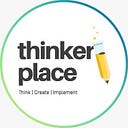THE FUTURE OF CLASSROOMS WITH STEM LEARNING
WHAT IS STEM LEARNING?
STEM is an acronym for what may be hailed as the foundational pillars of education. It stands for Science, Technology, Engineering, Mathematics. The term STEM Learning hence refers to the in-depth study and understanding of these disciplines.
Despite whatever else is taught to a student, his education will remain woefully incomplete if these subjects are not mastered. The four components of STEM are so deeply ingrained in every field of life that one cannot succeed in any vocation without studying at least one of them. As more and more people began to subscribe to this way of thinking, education systems all over the world switched to the model of STEM Education.
INADEQUACY OF CLASSROOMS
Classrooms in most schools follow a standard structure. They are designed to serve as spaces where students can sit, learn and engage in curricular and certain extracurricular activities. While this model worked well for the prior educational method, it failed to live up to the demands of the STEM Learning method. Some of the reasons for this include:
· Classroom culture became monotonous wherein students were expected to mechanically assimilate what was being taught, without analyzing it for themselves.
· There was heavy emphasis laid on only textbooks and notebooks being used for teaching, which restricts the scope of education.
· The concept of a ‘classroom’ as a learning space became a very rigid notion, and students were not exposed to diverse learning environments.
Thus STEM Schools recognized the need to make certain changes to their classrooms, both structurally and procedurally.
A SWITCH FROM INDIVIDUAL TO GROUP LEARNING
One of the most common traits of the earlier classroom structure used to be the focus on individualistic learning. The lessons and activities were mainly aimed at each student to learn by himself. This approach could not be carried forward to the new era of education and thus classrooms were forced to adapt. The emphasis is now on activities and projects that require groups of students to work together. This practice proves to be beneficial for the following reasons:
· STEM Learning requires students to analyze and find their way to the concepts being taught, instead of just being simply told about them. This process can be made more rewarding if students can get together to brainstorm, share ideas and thereby learn from each other.
· Group work boosts productivity levels. While working in a group, students learn to divide the tasks and combine the efforts of their peers to achieve the single desired outcome.
· The teamwork instils a sense of camaraderie among students and helps develop their communication skills.
EMBRACING TECHNOLOGY
Most schools have been abiding by the age-old idea that technology creates distractions, and it should be distanced from students. Except for some lessons which provided for a study of computers, technology was never considered as a potential teaching methodology. The rise of the STEM Education culture led to these notions being shed.
Technology is an indispensable tool to study the component subjects of STEM. Thus classrooms are now more open to the free use of the internet as well as electronic devices such as laptops and tablets. Some of the advantages that this inclusion offers are:
· By their very nature, the subjects of STEM Learning are dynamic and ever-evolving. If students were to continue using only books, they would receive outdated information and would be unaware of the new and emerging trends in the subjects. This hindrance is removed by classrooms embracing the use of technology.
· Technology allows students to carry out their research and arrive at their conclusions. It is information that is easily available at their fingertips, which encourages them to be more independent.
· The STEM Education method places reliance on practical rather than theoretical training. The usual classroom teaching methods are not equipped to deal with such a change, and technology eases the transition.
INCLUSION OF EXTERNAL INFLUENCES
The traditional classroom norm was that only the concerned subject teachers used to be responsible for teaching. As mentioned above, STEM Learning has a highly practical approach. In such a scenario, the theoretical knowledge that could be imparted by teachers began to be inadequate.
Classrooms have hence opened their doors to external teaching influences, who can contribute towards the students’ education. These external influences are mostly professionals in fields of STEM, who share their real-life experiences and give the students a deeper insight into the workings of the various industries.
DELEGATING WORK TO STUDENTS
Another noteworthy change in the classroom structure due to STEM Learning is the delegation of responsibility. Previously, it was only the teacher who designed the curriculum and planned how to teach it. The new method involves students in the teaching process.
This practice gives students a chance to directly voice their interests and concerns. Additionally, due to the responsibility being placed on them, students are forced to think of activities and techniques by which the concepts can be taught. This leads to them practically thinking about the subjects and thus ensures a better understanding.
In conclusion, it can be understood that the most significant aspect of STEM Education is that it leads to an expansion of the limits of education. Classrooms do not need to be confined to 4 walls and tied down to benches and desks. The whole world is a classroom for the curious and eager minds of those adopting STEM Learning.
Visit www.thinkerplace.in
